Let’s talk about one of the coolest and most serene interior design trends that’s been making waves lately— Japandi Style. If you’re tired of clutter, hoarding things and crave simplicity, and want your home to feel like a zen retreat, this might just be the style for you. Let’s explore!
Suggested Other read:
- 23 Japandi Dining Room Ideas You’ll Want to Try
- How to find Your Personal Interior Design Style?
- Elevate Your Home: 8 Must-Know Japandi Interior Design Tips
1. What exactly is Japandi Interior Design Style?
Japandi, is a blend of Japanese minimalism and Scandinavian functionality. Actually, it is more than just a style; it’s a way of living based on the principles of ‘wabi-sabi’. With the minimalistic look from both cultural influences, Japandi has become an incredibly popular decorating trend.
You might also like: The Ultimate Decluttering Checklist: 100 Items to Get Rid of from Bedrooms!
2. Key Elements of Japandi Interior Design Style:
Japandi emphasizes balance, simplicity, functionality, and a deep connection with nature, resulting in a clean and cozy atmosphere where simplicity truly meets elegance.
Here are eight essential elements that define Japandi Interior Design Style.
- Simplicity
- Natural Materials
- Neutral Colour Palette
- Sustainability
- Functional Furniture
- Natural Light
- Bringing the Outdoors In
- Handcrafted Elements
Recommended for You: How To Dodge Common Interior Design Mistakes and Avoid Future Regrets!
(2.1) Simplicity is Key:
Japandi loves keeping things simple. This design style embraces the “less is more” philosophy. This means decluttering your space and keeping only what you truly need and love. It’s about creating a clean, open environment where everything has a purpose.The design is clean and tidy with straight or curved lines. No unnecessary stuff – just what’s essential and meaningful. Think Marie Kondo meets Ikea.
Readers Also Loved: 10 Simple Vastu Tips for Your Home Office for Growth, Prosperity, Success
(2.2) Natural Materials:
In Japandi Style design, being eco-friendly is a big deal. Both Japanese and Scandinavian designs favour natural materials. Wood, stone, and bamboo are staples. These materials bring warmth and texture into the space, making it feel organic and grounded. Furniture is often made from natural materials like wood, rattan, and wicker, making it timeless and good for the environment. A wooden coffee table or bamboo blinds can instantly add that Japandi Style touch. Accessories, like terracotta, glass, and ceramics, also follow the eco-friendly theme.
You might also like: Cozy Spaces Are More Than Décor—They’re Medicine for the Mind
(2.3) Neutral Colour Palette:
Inspired by nature, Japandi Style design embraces a neutral colour palette that mimics the natural world. Warm and cool colours coexist harmoniously in this design style.
The colour palette in a Japandi home is usually calm and muted. Whites, beiges, soft greys, and earthy tones dominate the scene. These colours make the space feel light and airy, perfect for unwinding after a long day. You can add pops of colour but keep them subtle—think a dusty pink pillow or a sage green vase.
Wood tones and natural green shades from plants, along with muted pastels colours, bring the calm and beauty of nature inside.
(2.4) Japandi Interior Design Style: Incorporating Sustainability
Japandi design also places a strong emphasis on sustainability. This means choosing eco-friendly materials, investing in quality pieces that last, and reducing waste. Furniture made from sustainably sourced wood, energy-efficient lighting, and natural, organic fabrics are all part of creating a Japandi space.
By prioritizing sustainability, Japandi style not only enhances your living environment but also promotes a more mindful and environmentally conscious lifestyle.
(2.5) Functional Furniture in Japandi Interior Design Style:
Japandi furniture is all about function and form.
Each piece should serve a purpose while also being aesthetically pleasing. Look for furniture with clean lines and simple shapes. A low-profile sofa, a sleek wooden dining table, or minimalist shelving units are perfect examples.
(2.6) Natural Light:
Light is also a big deal in Japandi interiors. Big windows, glass ceilings, and openable doors allow lots of natural light.
The design ensures furniture doesn’t block the light, creating a bright, open, and inviting space.
(2.7) Japandi Interior Design Style: Bring the Outdoors
Nature plays a big role in Japandi design. Incorporate plants to add life and freshness to your space. Bonsai trees, potted plants, or even a simple vase with fresh flowers can do wonders. Natural light is also crucial, so keep your windows unblocked and let the sunshine in!
(2.8) Handcrafted Elements:
Adding handcrafted items brings a personal touch to your Japandi home. It could be a handmade ceramic vase, a woven basket, or a piece of artisanal pottery. These items add character and make your space feel unique.
3. Tips for using Japandi Interior Design style:
To Incorporate Japandi interior design style in your home decor consider the following tips.
(3.1) Shop Sustainably:
Japandi places a strong emphasis on sustainability. Incorporate natural materials like wood, unfinished wood, bamboo, rattan, cane, wicker, wool, terracotta, linen, and cotton. Opt for materials that are recyclable and eco-friendly.
Japandi also places a spotlight on artisanal, handcrafted items, allowing you to enhance your space while providing an excellent chance to support local furniture makers.
(3.2) Colour Palette used in Japandi Interior Design Style:
Colour selection plays an important role in establishing any interior design style.
Merge Scandinavian neutral tones like grey, white, and brown with Japanese earthy hues and autumn foliage colours.
In short, use warm neutral colours like beige and tan along with cool neutrals like grey and blue. This creates a warm and calming colour palette, bringing the essence of nature into your space.
(3.3) Minimal Colour Variation:
Minimize colour variations by adopting a mostly monochromatic approach. Choose one primary colour from the Japandi colour palette and incorporate shades, tones, and tints of that colour to create a cohesive and tranquil atmosphere. Introduce the second colour sparingly, strategically using it to break the monotony and add subtle contrast.
(3.4) Enhance your space with plants:
A key feature in Japandi style. Embracing greenery as decor, plants not only add vibrancy but also contribute to air purification. Consider houseplants such as hanging vines, bonsai trees, or rubber plants to introduce both a natural touch and a decorative accent colour to your living environment.
(3.5) Texture:
Add depth and visual interest to your space by incorporating various textures. From rugs and throw pillows to art pieces, texture plays a crucial role in creating a tactile and inviting environment.
(3.6) Emphasis on Handcraft:
Celebrate the artistry of handcrafted items. Select decor pieces that showcase the human touch, contributing to the unique and personal atmosphere of your Japandi space.
(3.7) Clutter-Free and Clean Lines:
Follow a clutter-free approach with clean lines and tidy spaces. Minimize visual noise by avoiding excessive knick-knacks. Instead, keep everything organized in closed cabinets and containers, displaying only a few meaningful items.
(3.8) Crafty Furniture:
Blend Japanese craftsmanship with Scandinavian comfort. Concentrate on comfortable pillows and minimal furniture in bedrooms. For living areas, choose crafty furniture and introduce texture through throw pillows, rugs, and a selection of art pieces.
(3.9) Japandi Interior Design Style: Additional Enhancements:
- Incorporate natural scents to enhance the serene atmosphere. Essential oil diffusers, soy candles, and incense sticks with calming fragrances like lavender, eucalyptus, and sandalwood can add an extra layer of tranquillity to your space.
- Add personal touches that reflect your style and interests. Display a few favourite books, family photos in simple frames, or travel souvenirs that bring joy and memories without cluttering the space.
- Opt for smart storage solutions that keep your space clutter-free. Built-in shelves, under-bed storage, and minimalist cabinets help maintain the clean lines and open feel of Japandi design. Ensure that storage solutions blend seamlessly with the overall decor.
By incorporating these additional enhancements, you can create a Japandi-inspired home that is not only beautiful and functional but also deeply relaxing and personalized. These touches will help you achieve a perfect balance of simplicity, elegance, and comfort.
(3.10) Shoji Lightings and Panels:
Consider incorporating traditional Japanese shoji lightings and panels. These elements not only add an authentic touch to your space but also contribute to the overall aesthetic, enhancing the cultural richness of Japandi design.
4. Wabi-Sabi Philosophy:
In traditional Japanese aesthetics, wabi-sabi (侘び寂び) centers on accepting transience and imperfection. This worldview appreciates beauty that is imperfect, impermanent, and incomplete.
Remember that Japandi is built on the Japanese expression of wabi-sabi, which appreciates the beauty found in imperfections. So, embrace simplicity, celebrate the incomplete, and let your space tell a story of authenticity and mindful living.
5. Cozy Haven Tales: Pro Tips for Perfect Japandi Interiors
Japandi is more than a style—it’s a lifestyle. It transforms your home into a cozy haven where calm and warmth coexist. Every space is guided by restraint, every piece of furniture chosen with intention, and every accent a quiet nod to nature. With Japandi, your home becomes a retreat that embraces slow living and celebrates serenity in simplicity.
- 🌿 Mix Warm and Cool Neutrals: Balance Scandinavian lightness with Japanese depth—soft beige walls with dark wood furniture, for example.
- 🌿 Play With Texture, Not Color: Instead of bold shades, rely on layered materials like linen, rattan, stone, and matte ceramics.
- 🌿 Keep Furniture Low and Grounded: Choose low tables, benches, or sofas that emphasize calm, horizontal lines.
- 🌿 Add Nature in Small Ways: A single branch in a vase or a bonsai on a side table can anchor the space with life.
- 🌿 Curate, Don’t Clutter: Japandi thrives on minimalism—every object should serve a purpose or spark joy.
- 🌿 Use Imperfect Accents: Hand-thrown pottery, aged woods, or uneven weaves bring in the Japanese concept of wabi-sabi.
- 🌿 Think Light Flow: Soft lighting, paper shades, and candles add hygge comfort while staying aligned with Japanese calm.
6. Conclusion:
Japandi interior design goes beyond aesthetics; it’s a mindful and intentional way of living. By combining Japanese and Scandinavian influences, you create a space that is not only visually appealing but also echoes the principles of simplicity, sustainability, and the beauty found in life’s imperfections. Embrace the art of Japandi, and let your home become a haven of harmony and balance.
7. FAQs on Japandi Interior Design
Japandi blends Japanese minimalism with Scandinavian warmth, focusing on simplicity, natural materials, and functionality.
Neutral and earthy tones—beige, grey, soft white, muted greens, and black accents—form the foundation of Japandi spaces.
Japandi combines the clean lines of Scandinavian style with the natural textures and wabi-sabi philosophy of Japanese design.
Light woods, bamboo, linen, ceramics, stone, and wool—materials that feel tactile, natural, and calming.
Yes—its minimalist approach and smart use of negative space make it ideal for compact living.
Embrace imperfections—choose handcrafted ceramics, rustic woods, and organic textures for authentic warmth.
Low, simple, functional pieces in wood, often with Scandinavian comfort blended with Japanese minimal forms.
Japandi is considered timeless because it prioritizes natural beauty, simplicity, and balance over fleeting trends.
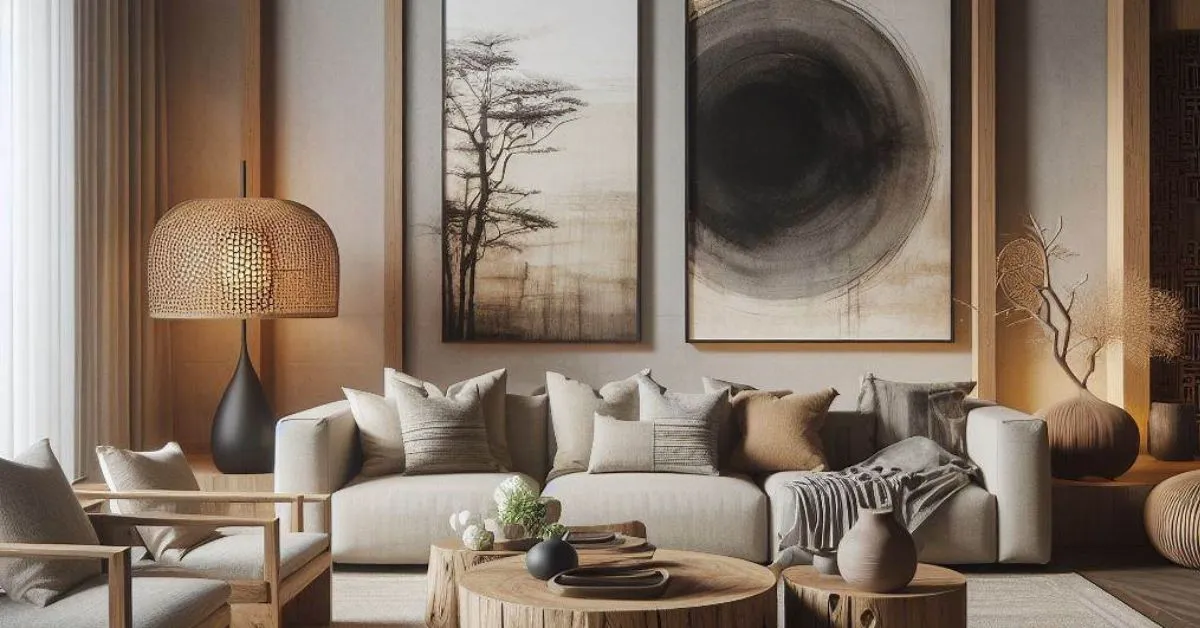

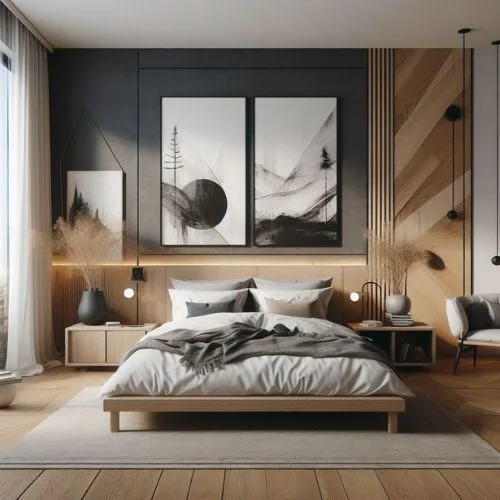



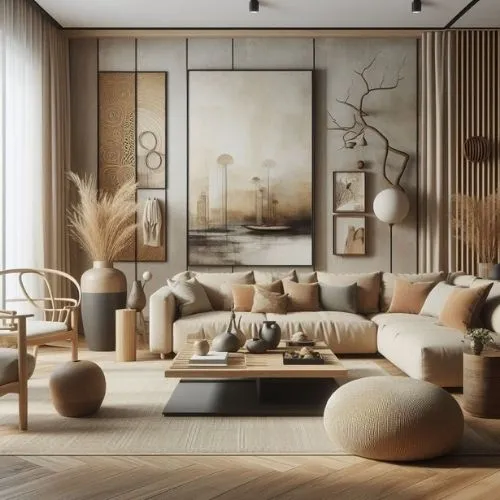

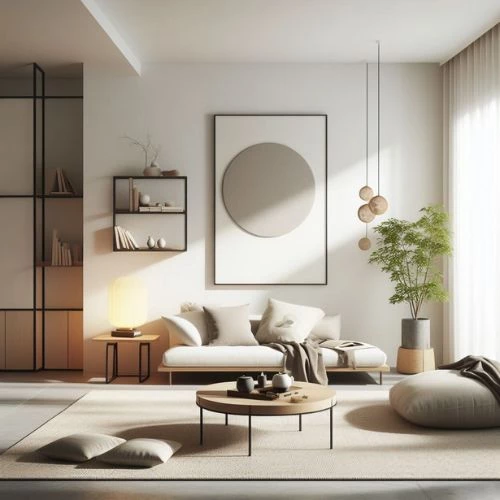


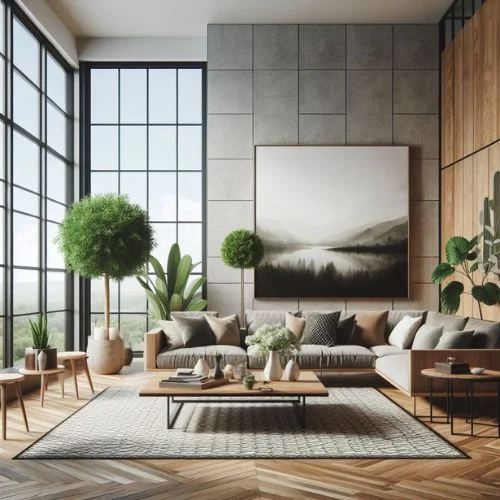


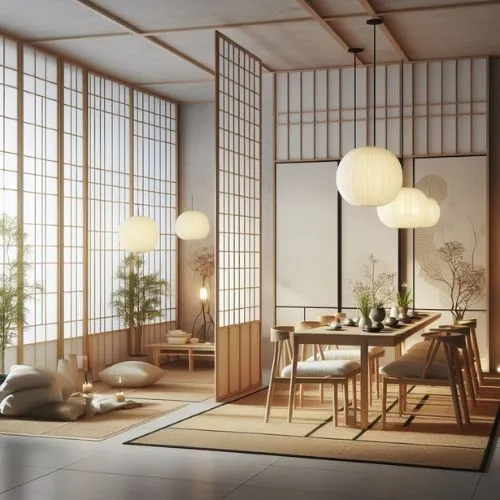
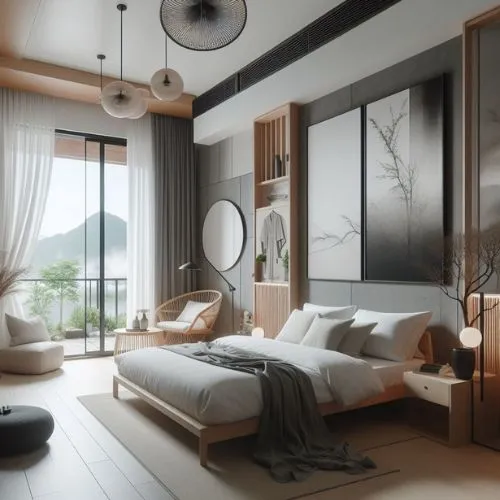




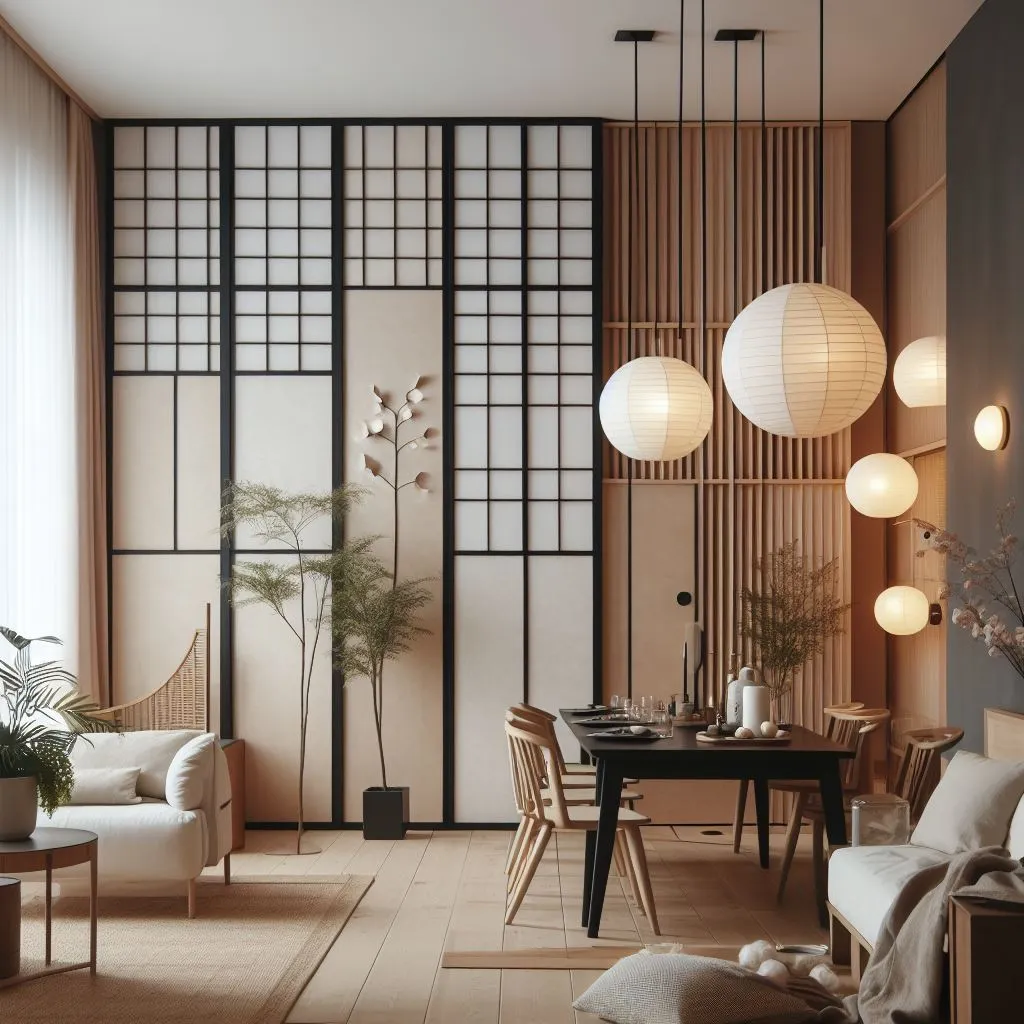
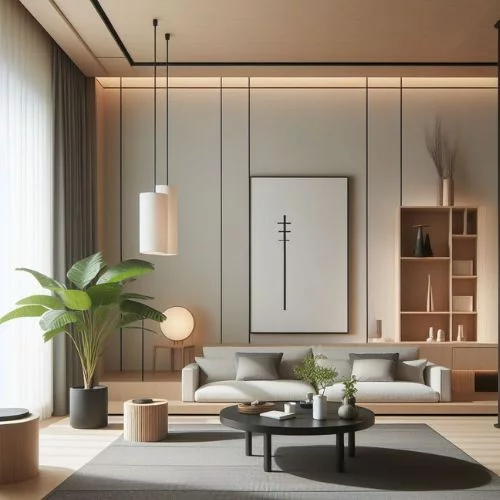
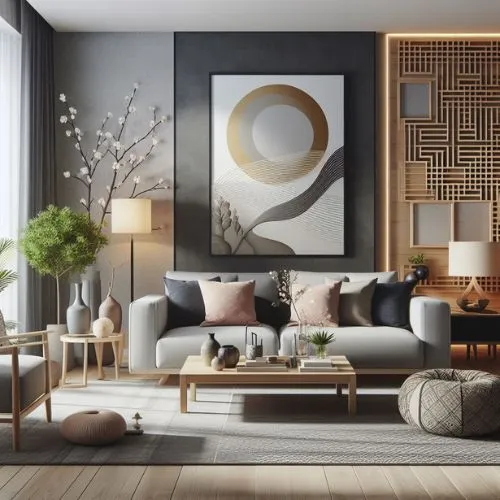
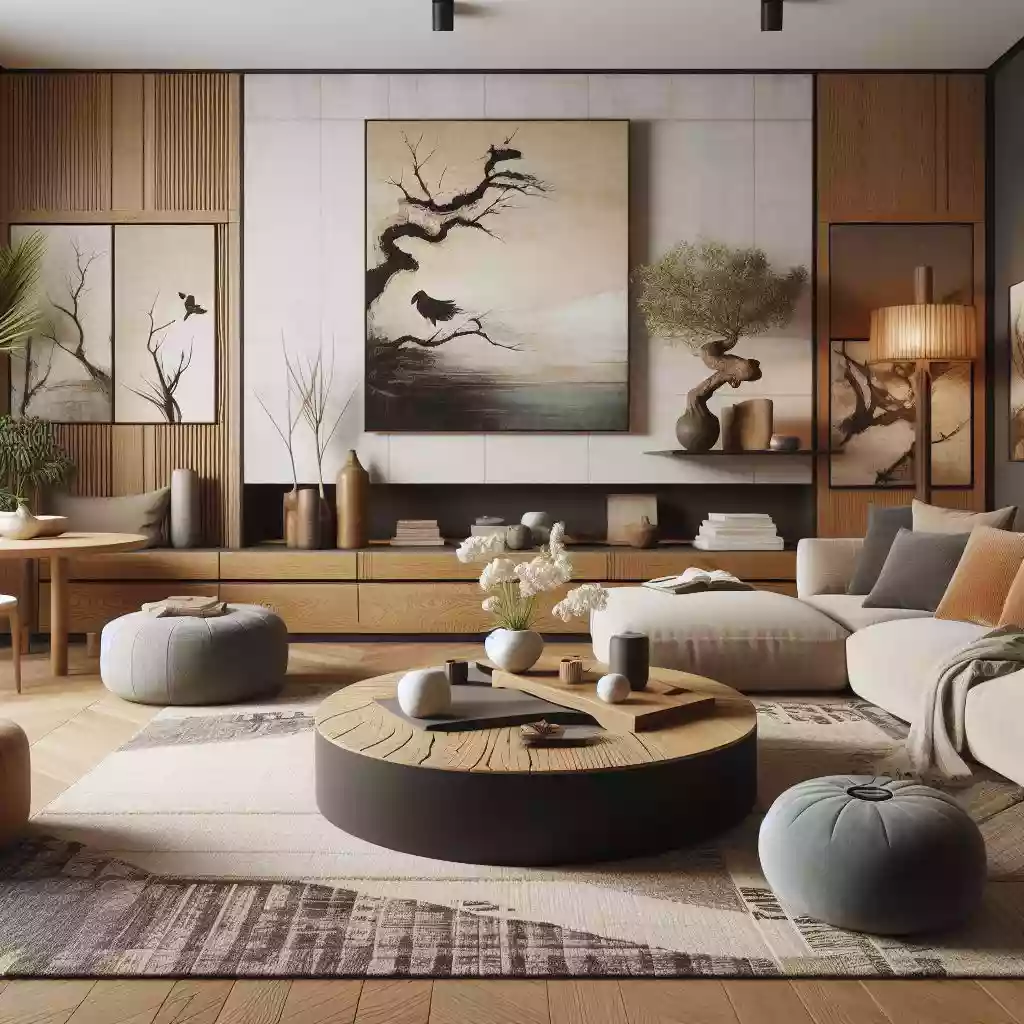

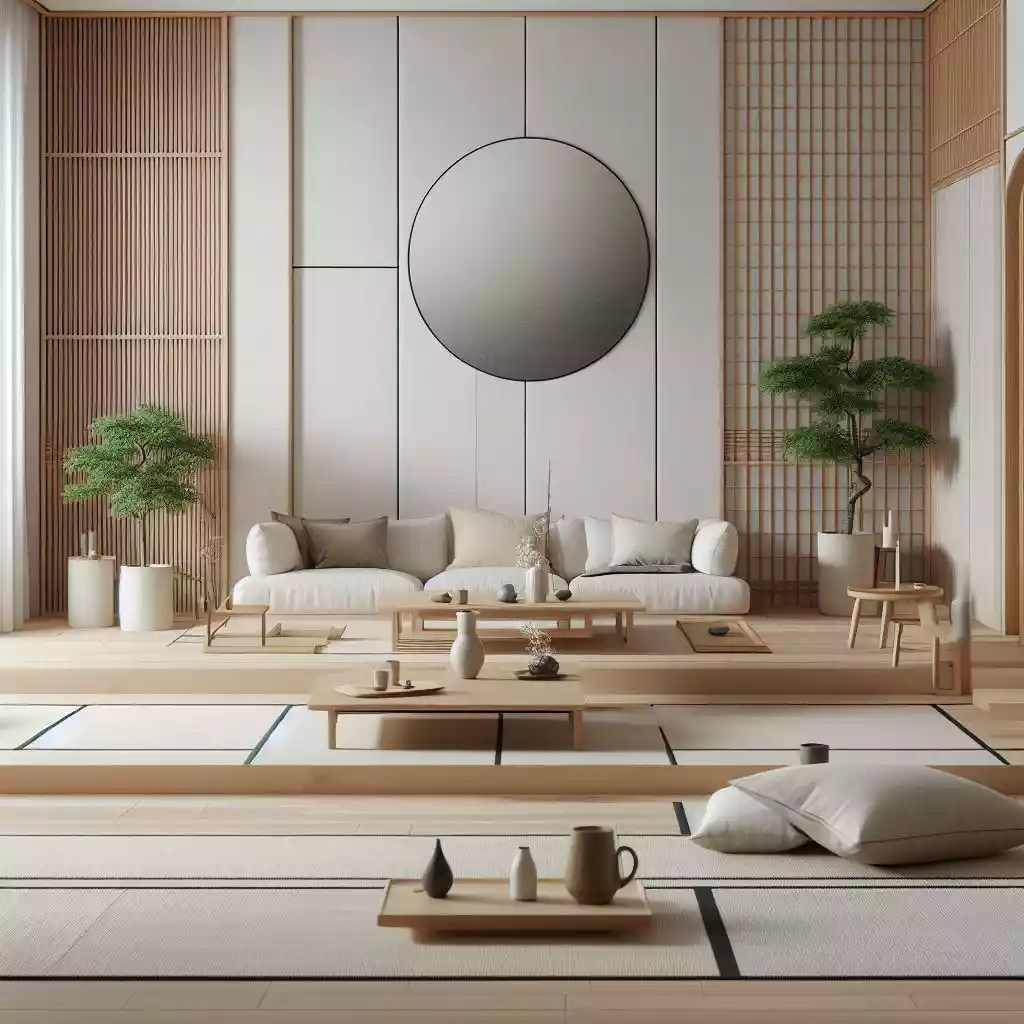

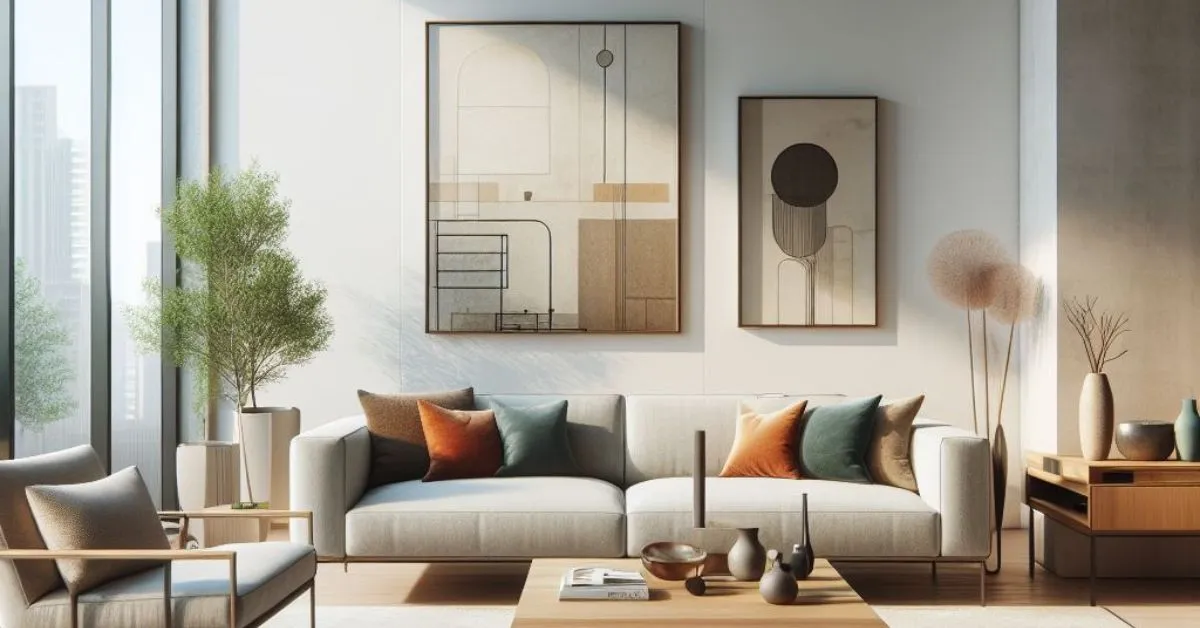



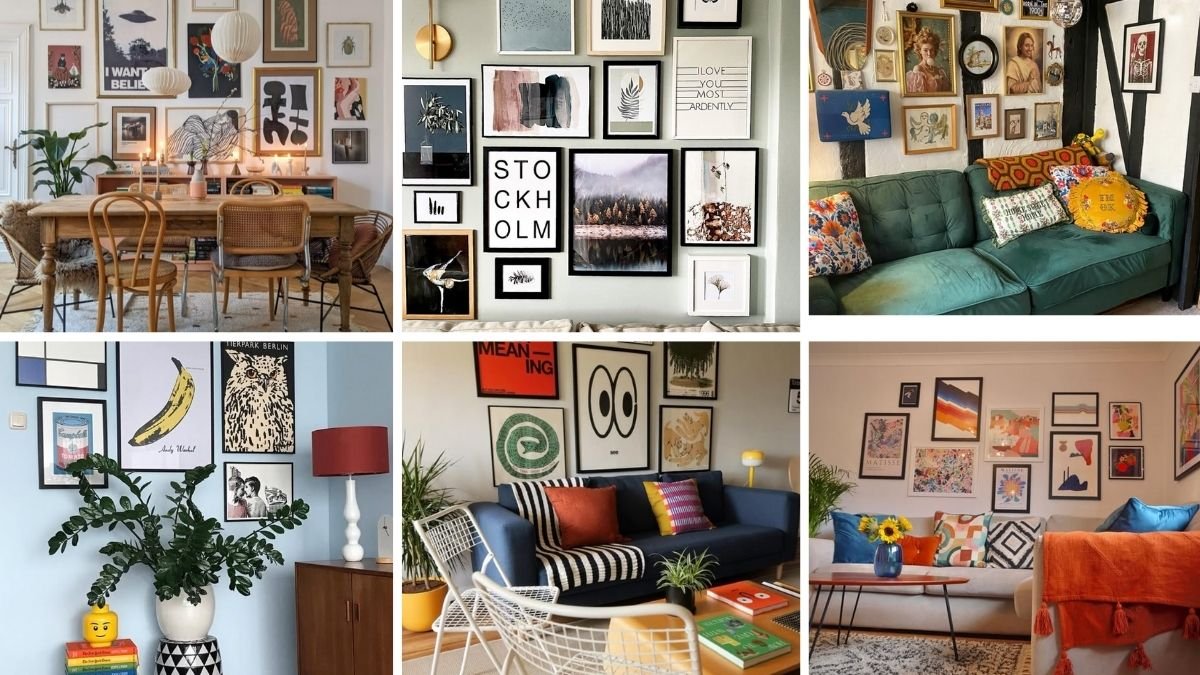
One Comment